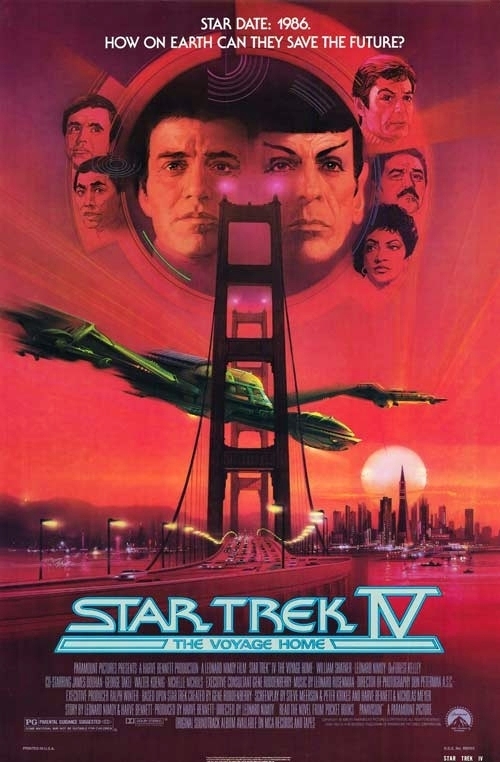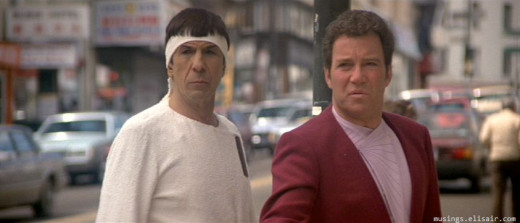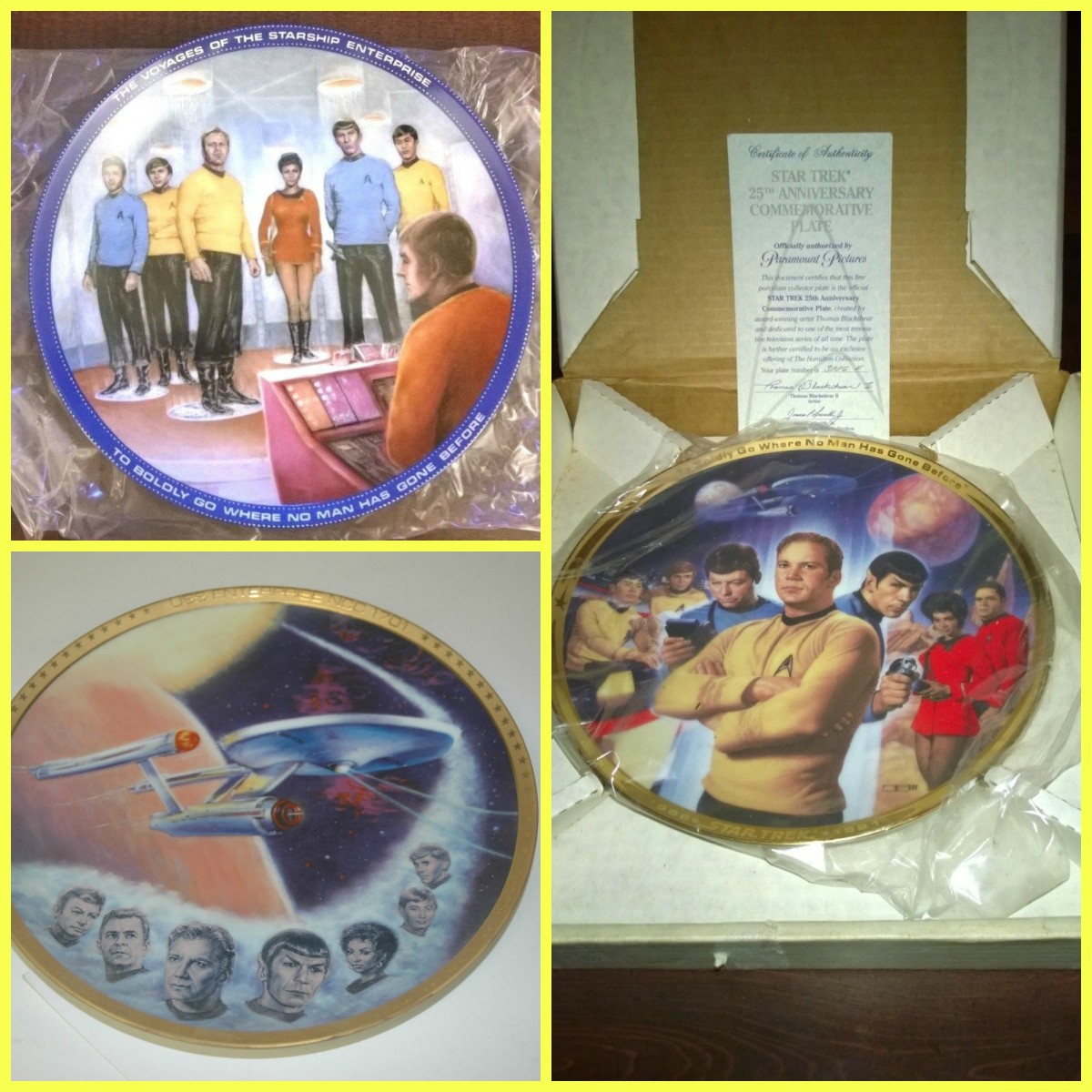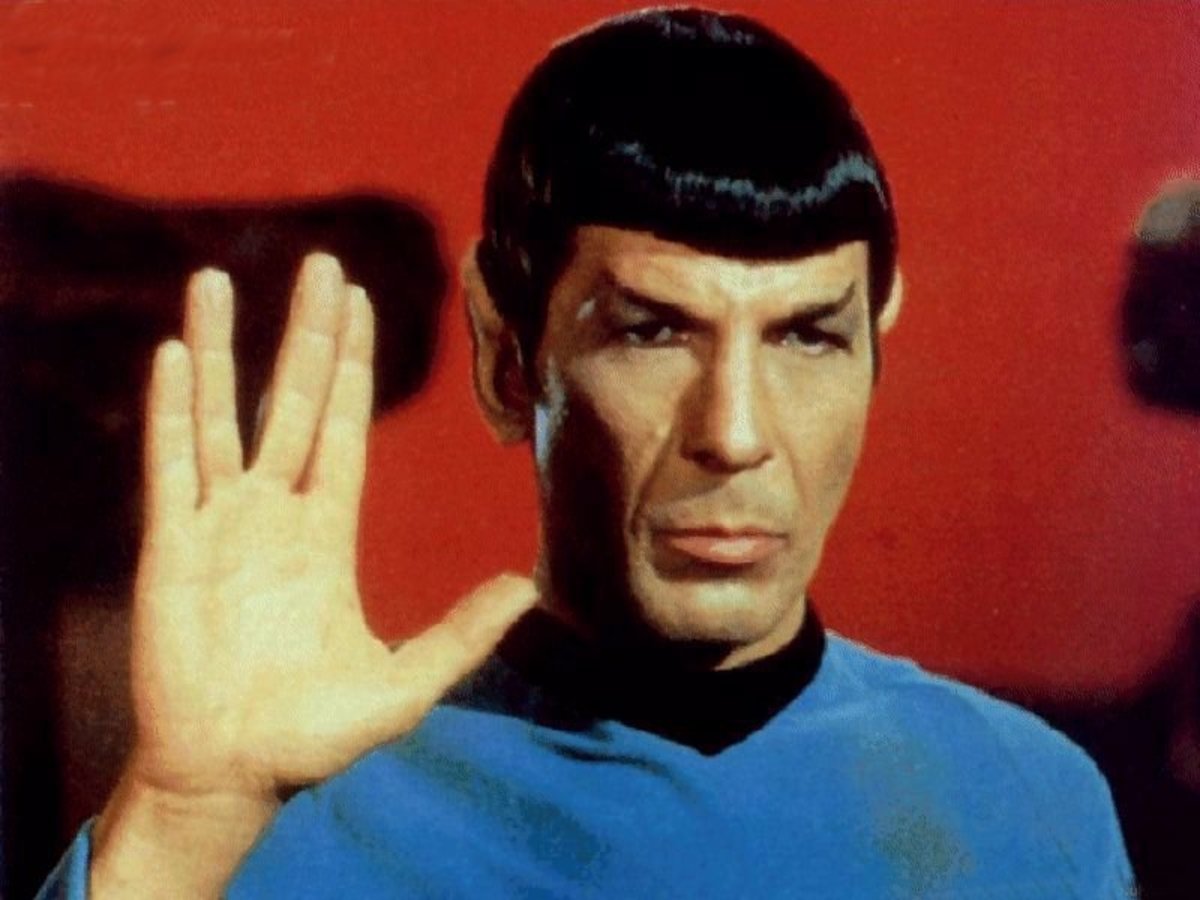Film Review: Star Trek IV: The Voyage Home

Background
In 1986, Leonard Nimoy released Star Trek IV: The Voyage Home, based on the 1966 television series Star Trek created by Gene Roddenberry, as the fourth film in the franchise. Starring William Shatner, Leonard Nimoy, James Doohan, George Takei, Walter Koenig, Nichelle Nichols, DeForest Kelley, Catherine Hicks, Majel Barrett, Madge Sinclair, Jane Wiedlin, Brock Peters, and John Schuck,The film grossed $133 million at the box office.
Synopsis
Prepared to face the consequences of his previous actions, Kirk heads back to earth, but another powerful alien probe is making its way there as well, wreaking havoc with the environment and technology. The crew deduces that the probe is searching for humpback whales, but they’re extinct in the 23rd century. As such, the they use a Klingon Bird-of-Prey to travel to 1980s San Francisco to retrieve some.

Review
What really makes Star Trek: The Voyage Home such an interesting entry in the series is that it doesn't follow the usual formula. Despite that, the film manages to be hilariously funny and really good. A lot of the film’s humor comes from the fish out of water scenario the crew finds themselves in. They all, minus Spock, think they know what they’re talking about when it comes to the culture, but being from the future, they really don’t. Kirk doesn’t know that $100 really isn’t very much and apparently none of them really have any historical knowledge to realize why a Russian looking for nuclear vessels in the middle of Cold War United States might not be a very good idea. There’s also the hospital scene and McCoy thinking they’d kill Chekov because their medicine is so primitive and when he finally gets there, he finds himself aghast at what he thinks is complete barbarism and gives an old lady on dialysis some pills that completely regrow her kidneys. Spock doesn’t see how getting into an aquarium tank with two whales could possibly be considered odd, but reacting to the punk who wouldn’t shut his music off by administering a nerve pinch is particularly funny. Neither of those may really be the culturally appropriate response. To him though, they are logical and since he’s not really paying attention to his human side for most of the film, doing so is the correct thing to do.
In the middle of all the humorous misunderstandings going on, Sulu is able to acquire a helicopter, presumably without any problems, and just shows up with it carrying the whale tank.
There’s also a lot of great moments that really finish the character arc Spock started in the second film. Spock spends the first part of the film really only embracing his Vulcanness and not paying any heed to his human half. However, in certain points throughout the film, his humanity comes out, with it ending on embracing both halves. It's seen when asked if saving Chekov is the logical thing to do, he asserts that it isn’t, but it is the human thing and when the crew is put on trial, he stands with them because they are his shipmates. Finally, he tells his father to tell his mother that he’s fine, showing that he will acknowledge the fact that he’s half human.
Gillian is quite an interesting person as well. She cares about the whales like they were her own children because they practically are and knows that they’re going to be leaving the aquarium and sees it like her children are growing up. Viewing them like that makes it so she doesn’t want to say goodbye. It really makes sense how she reacts when her boss tells her they released them when she comes in because anyone would react that way when confronted with the fact that they’re children went off into the world without saying goodbye. She joins the crew and it makes sense, because the whales were the only thing she really had.
The name of the film, The Voyage Home is pretty notable as well considering it has two meanings. The first is that the crew was making their way back to Earth to face the consequences of their actions but the detour with having to travel into the past turned their direct route into a voyage with a directive to find humpback whales and bring them back. They have to do all of this before they can really go home. The second touches on when the crew come across the newest incarnation of the Enterprise at the end of the film, showing that they made their voyage through the entire story and have returned to their true home.
the postings on this site are my own and don't necessarily represent WNI's positions, strategies or opinions.
Awards won
Academy of Science Fiction, Fantasy & Horror Films Saturn Awards
- Best Costumes
ASCAP Film and Television Music Awards
- Top Box Office Films
Genesis Awards
- Feature Film - Adventure
Nominated for
Academy Awards
- Best Cinematography
- Best Sound
- Best Effects, Sound Effects Editing
- Best Music, Original Score
Academy of Science Fiction, Fantasy & Horror Films Saturn Awards
- Best Science Fiction Film
- Best Actor (Leonard Nimoy)
- Best Actor (William Shatner)
- Best Supporting Actor (James Doohan)
- Best Supporting Actor (Walter Koenig)
- Best Supporting Actress (Catherine Hicks)
- Best Director
- Best Writing
- Best Make-Up
- Best Special Effects
American Society of Cinematographers Awards
- Outstanding Achievement in Cinematography in Theatrical Releases
Hugo Awards
- Best Dramatic Presentation
Young Artist Awards
- Best Family Motion Picture - Drama








